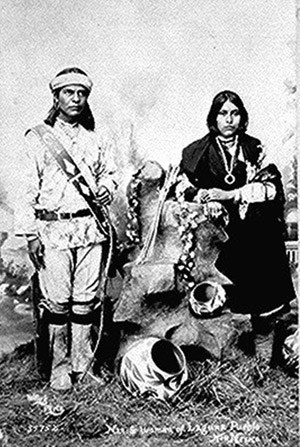
Mission San José de Laguna
Pueblo of Laguna, New Mexico
Coordinates: 35.039105, -107.254307
#TravelSpanishMissions
Discover Our Shared Heritage
Spanish Colonial Missions of the Southwest Travel Itinerary

Photograph by Dan Boff on Flickr via Creative Commons license

Photographed by Ben Wittick.
Courtesy of the National Archives, American Indian Select List no. 71.

Photo by James M. Slack from the Historic American Building Survey. Courtesy of the National Park Service.

Photo by Ken Lund. Courtesy of Flickr Creative Commons.
Plan Your Visit
San José de la Laguna Mission is 40 miles west of Albuquerque, off I-40 at exit 114 in Laguna (Pueblo of Laguna), NM. The St. Joseph Church is at 1 Friar Rd. The church is wheelchair accessible and generally is open to visitors from 9:00 to 4:00. Photography is generally not allowed. Church tours can be arranged by calling ahead. For more information, call San José Mission at 505-552-9330. For further information about visiting the Pueblo of Laguna, visit the Pueblo of Laguna website or call 505-552-6654.
San José de la Laguna Mission is part of the Laguna Pueblo Historic District and is listed in the National Register of Historic Places. The Pueblo of Laguna has been documented by the National Park Service’s Historic American Buildings Survey and is featured in the National Park Service American Southwest Travel Itinerary and the Route 66 Travel Itinerary.
Last updated: April 15, 2016
